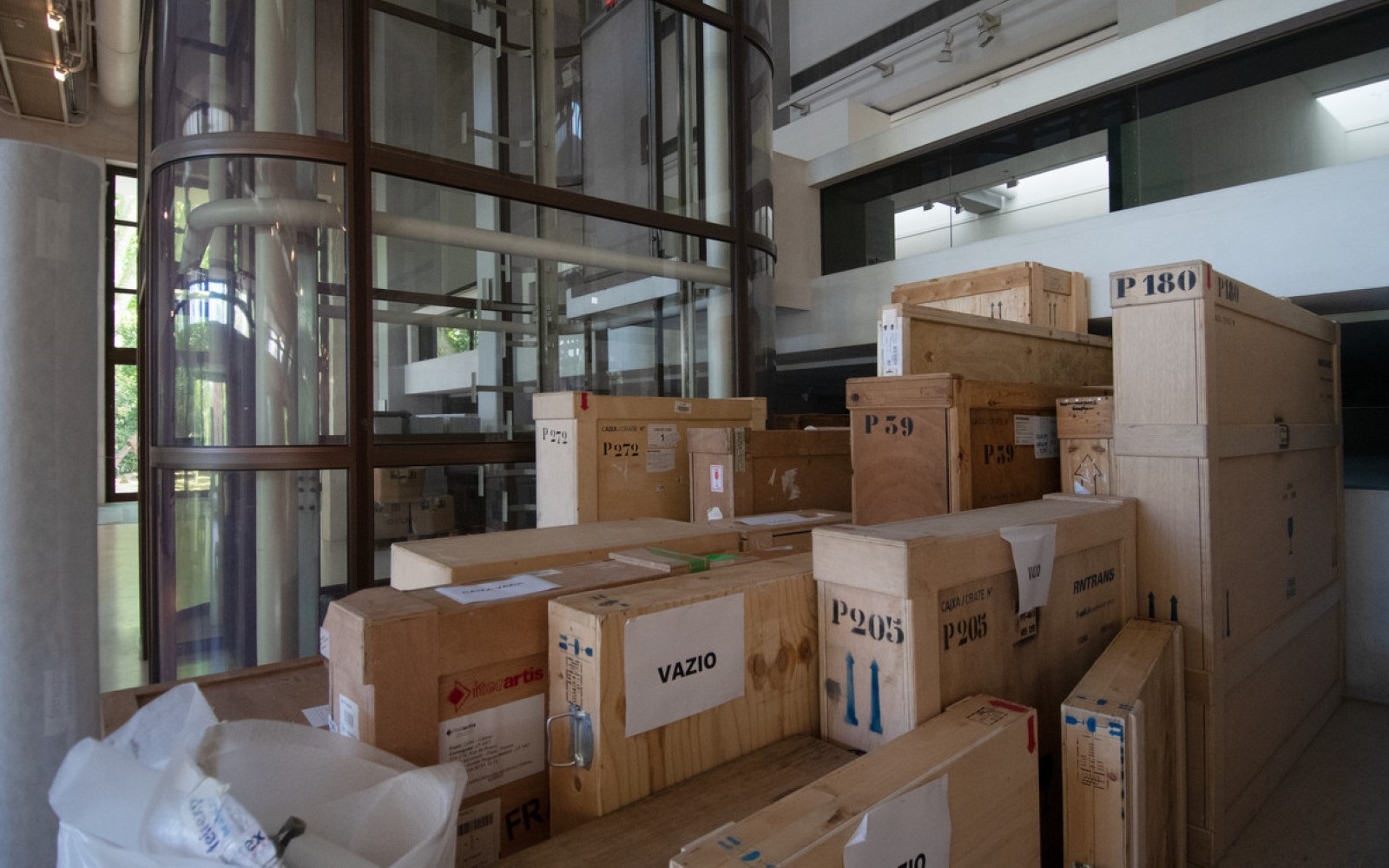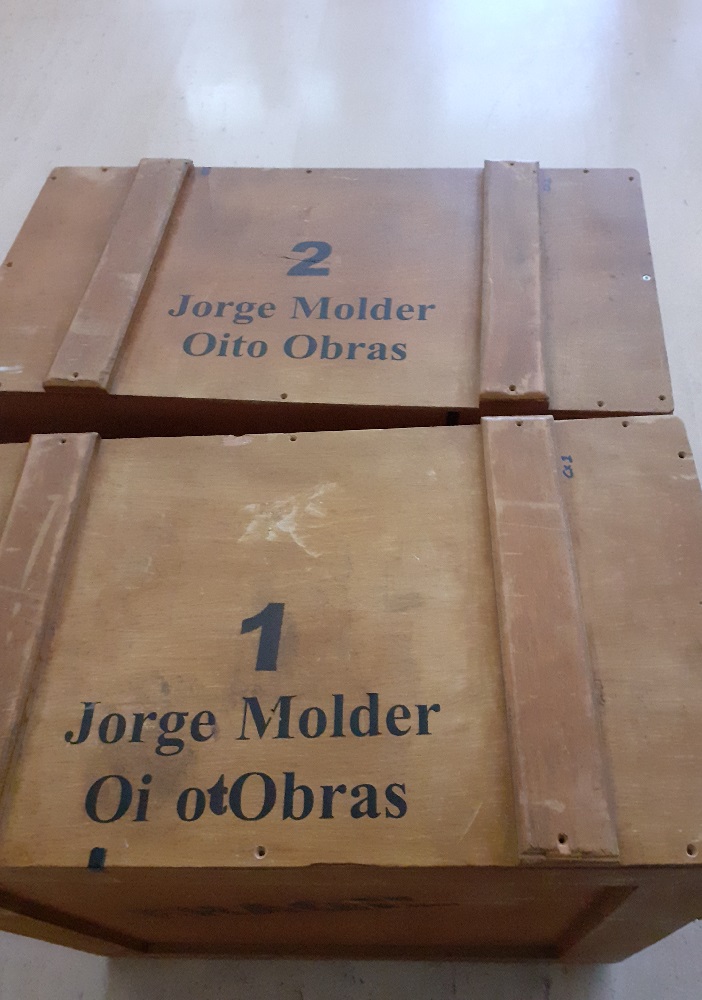CAM under renovation

Amidst a haze of dust and with the rhythm of jackhammers in the background, countless workers parade by on a mission to embody the vision of architect Kengo Kuma, winner of the project to renovate the CAM and expand the Calouste Gulbenkian Foundation’s garden. Thanks to them, walls are being torn down and a large space is being created from which new accesses, reserves and a new exhibition area are being developed, all with a cadence that reflects rapid and successful progress. Further up, we can see the creation of a crossing circuit connecting the northern and southern parts of the garden and the renovation of the outdoor spaces.
Is it easy to move 11,800 pieces?
While moving 11,800 pieces of various materials, sizes and weights could be quite a headache, a rigorous schedule to coordinate the numerous work teams and a constant and systematic record of the path of each artwork makes everything easier.

Storing artworks
All pieces are categorised in various reserves, with works on paper among the least demanding in terms of space, unlike the various sizes of paintings, which require a more thorough treatment in terms of shape and packaging type.
Artworks are stored and packed with millimetric precision in the various reserves so that everything fits perfectly and remains in excellent condition until the day they are exhibited and seen by the public again.


Attention is the best form of conservation
As no detail however small should be overlooked, we dedicate special attention to each piece focused on its category and state of conservation. If necessary, we undertake intervention. Outsized sculptures and installations require adequate facilities and technicians and an optimisation of storage space. In the case of the sculptures by Rui Chafes and Antony Gormley, new bases were created which are more suitable for their conditioning.
Elizabeth Martins
Conservator-restorer